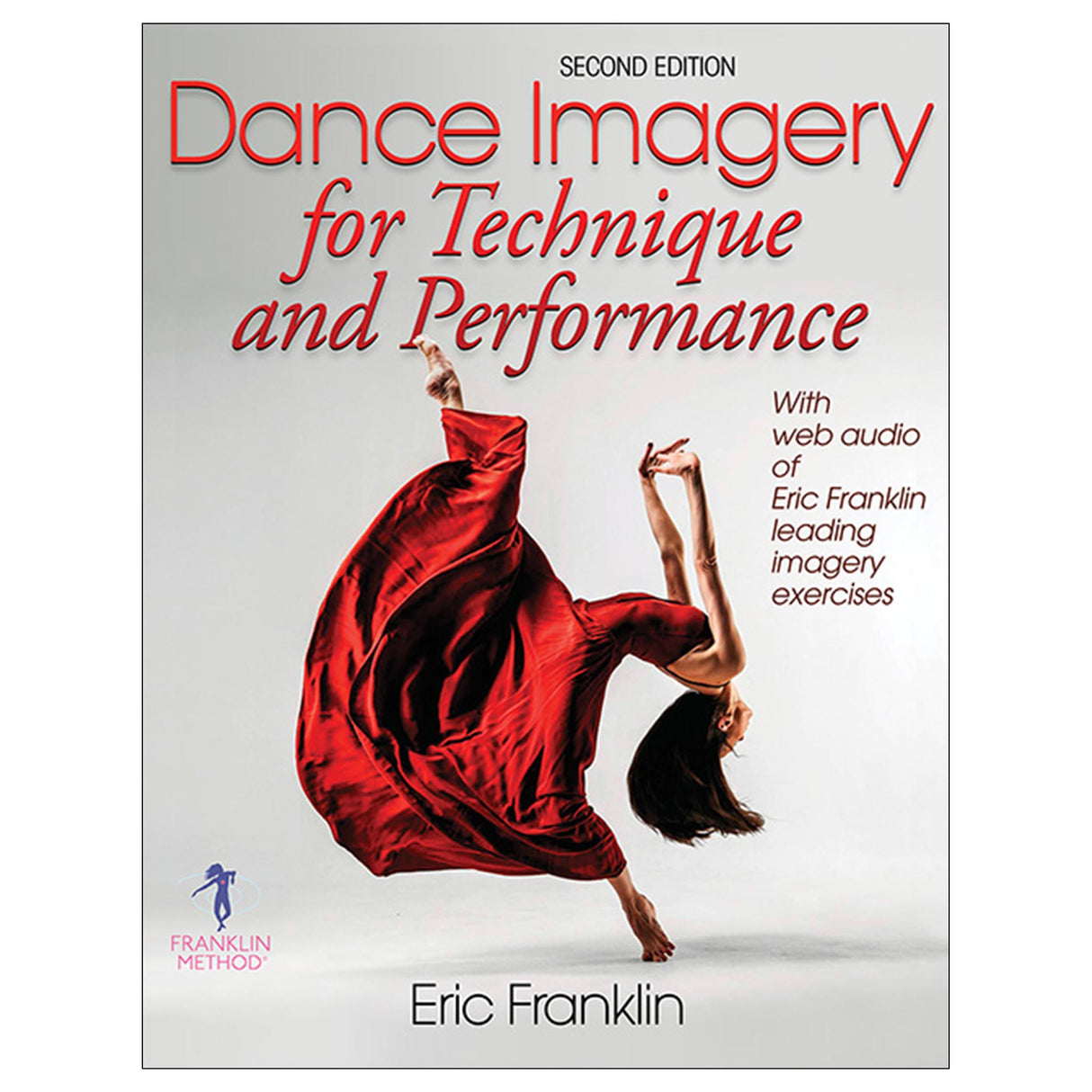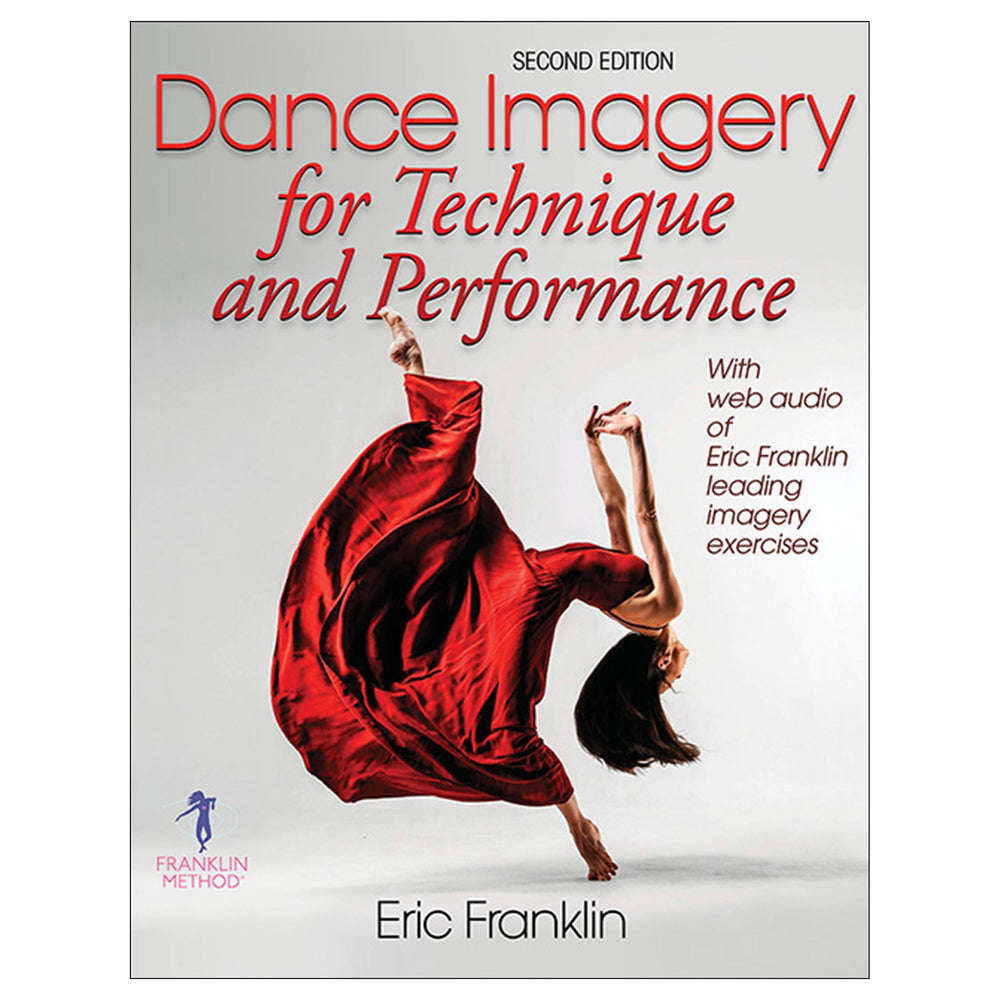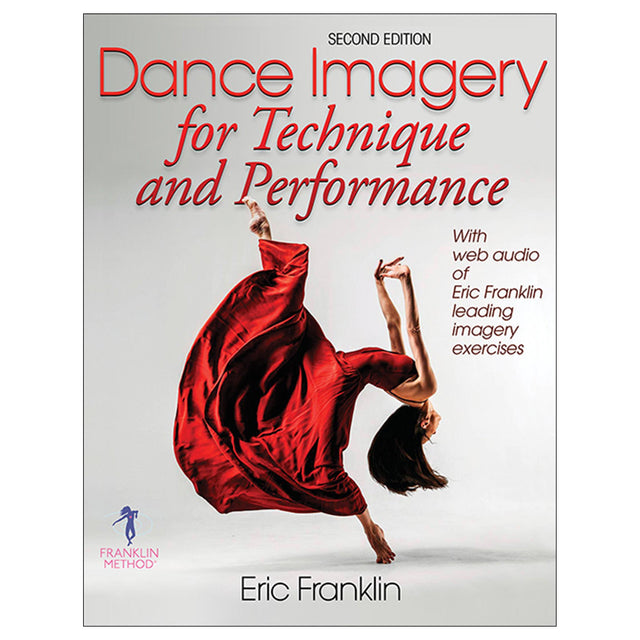Dance Imagery for Technique and Performance 2nd Edition PDF
Author: Eric Franklin
$45.95 CAD
Access Duration: 10 Years
Renowned master teacher Eric Franklin has thoroughly updated his classic text, Dance Imagery for Technique and Performance, providing dancers and dance educators with a deep understanding of how they can use imagery to improve their dancing and artistic expression in class and in performance.
These features are new to this edition:
•Two chapters include background, history, theory, and uses of imagery.
•294 exercises offer dancers and dance educators greater opportunities to experience how imagery can enhance technique and performance.
•133 illustrations facilitate the use of imagery to improve technique, artistic expression, and performance.
•Four exercises taught by Franklin and available on HK’s website help dancers with essential rest and relaxation techniques.
Franklin provides hundreds of imagery exercises to refine improvisation, technique, and choreography. The 295 illustrations cover the major topics in the book, showing exercises to use in technique, artistic expression, and performance. In addition, Franklin supplies imagery exercises that can restore and regenerate the body through massage, touch, and stretching. And he offers guidance in using imagery to convey information about a dancer’s steps and to clarify the intent and content of movement.
This new edition of Dance Imagery for Technique and Performance can be used with Franklin’s Dynamic Alignment Through Imagery, Second Edition, or on its own. Either way, readers will learn how to combine technical expertise with imagery skills to enrich their performance, and they will discover methods they can use to explore how imagery connects with dance improvisation and technique.
Dance Imagery for Technique and Performance uses improvisation exercises to help readers investigate new inner landscapes to create and communicate various movement qualities, provides guidelines for applying imagery in the dance class, and helps dancers expand their repertoire of expressiveness in technique and performance across ballet, modern, and contemporary dance.
This expanded edition of Dance Imagery for Technique and Performance supplies imagery tools for enhancing or preparing for performance, and it introduces the importance of imagery in dancing and teaching dance. Franklin’s method of using imagery in dance is displayed throughout this lavishly illustrated book, and the research from scientific and dance literature that supports Franklin’s method is detailed.
The text, exercises, and illustrations make this book a practical resource for dancers and dance educators alike.
Part I. Art and Science of Imagery
Chapter 1. History, Theory, and Uses of Imagery
Defining Imagery
Historical Perspectives
Emerging Theories on Imagery
Benefits of Using Imagery in Dance
Summary
Chapter 2. Types and Effectiveness of Imagery
Direct Imagery
Types of Imagery
Imagery Strings
Making Imagery Effective
Summary
Part II. Discovering and Exploring Imagery
Chapter 3. Discovering Imagery
Nature
Movies
Literary Arts
Music
Visual Arts
Propensity Toward Imagery
Summary
Chapter 4. Basic Movement Imagery and Exercises
Intention
Whole-Body Sensation
Space
Weight
Music and Rhythm
Connections Through the Body
Breath and Flow
Summary
Chapter 5. Imagery in Dance Improvisation
Improvisation and Dance Technique
Improvisation With Children
Imagery Improvisation Exercises
Contact Improvisation and Imagery
Butoh
Summary
Part III. Imagery in Dance Technique Classes
Chapter 6. Teaching Dance With Imagery
Elements of Making Progress
Function and Anatomy
Effort and Tension
Alignment Paradox
Guidelines for Teachers
Guidelines for Students
Summary
Chapter 7. Floorwork, Walking, and Running
Floorwork
Pelvis as a Strong Sitting Base
Upper-Body Motion While Sitting
Falls to the Floor
Rolls on the Ground
Floor Barre
Stillness and Slow Movement
The Foot
Walking and Running
Summary
Chapter 8. Plié
Force Absorption in Plié
Imagery for Plié
Summary
Chapter 9. Tendu-Based Movements
Battement Tendu/Dégagé (Jeté)
Rond de Jambe à Terre
Battement Fondu (Demi-Plié on One Leg)
Battement Frappé
Summary
Chapter 10. Développé and Other Extensions
Creating Smooth Action in the Hip Joint
Extensions to the Back
Releasing Tension, Embodying Fascia
Summary
Chapter 11. Arabesque, Attitude, and Grand Battement
Research on Imagery for the Plié Arabesque
Art and Science of Balance
Grand Battement
Summary
Chapter 12. Swings, Arches, and Spirals
Swings and Arches
Spirals
Summary
Chapter 13. Upper-Body Gestures
Port de Bras (Arm Gestures)
Hands
Face
Eyes
Neck
Summary
Chapter 14. Turns
From Crawls to Pirouettes
Natural Turners
What You Can Learn From a Spinning Top
Turning With the Whole Body
Angular Motion
Phases of Turning in Pirouettes
Summary
Chapter 15. Jumps
Speed and Leverage
Anatomical Considerations
The Foot in Jumping
Elastic Leaps and Rhythmic Rebound
Traveling Leaps and Turning Leaps
Breathing Before Jumping
Arms and Leaping
Floors and Soft Landings
The Sky Is the Limit
Summary
Chapter 16. Partnering
Requirements for Partnering
Connecting With Your Partner
Using Imagery in Partnering
Summary
Part IV. Imagery in Choreography, Rest, and Regeneration
Chapter 17. Imagery and Performance Quality
Expressivity
Authenticity
Endowment
Magical Outfit
Performance Environment
Relationship With the Audience
Your History
Stepping Onstage
Summary
Chapter 18. Rest and Regeneration
Using Your Hands
Releasing Touch
Constructive Rest
Guided Imagery
Summary
The Franklin method has proved invaluable to our students at the Juilliard School in New York City for the past several years. Learning how to use mental imagery and functional anatomy for dance augments our training program beautifully because it is clear, precise, and useful in every way for any dancer. The students have found it revelatory!
Lawrence Rhodes--Director of the Dance Division, The Juilliard School





